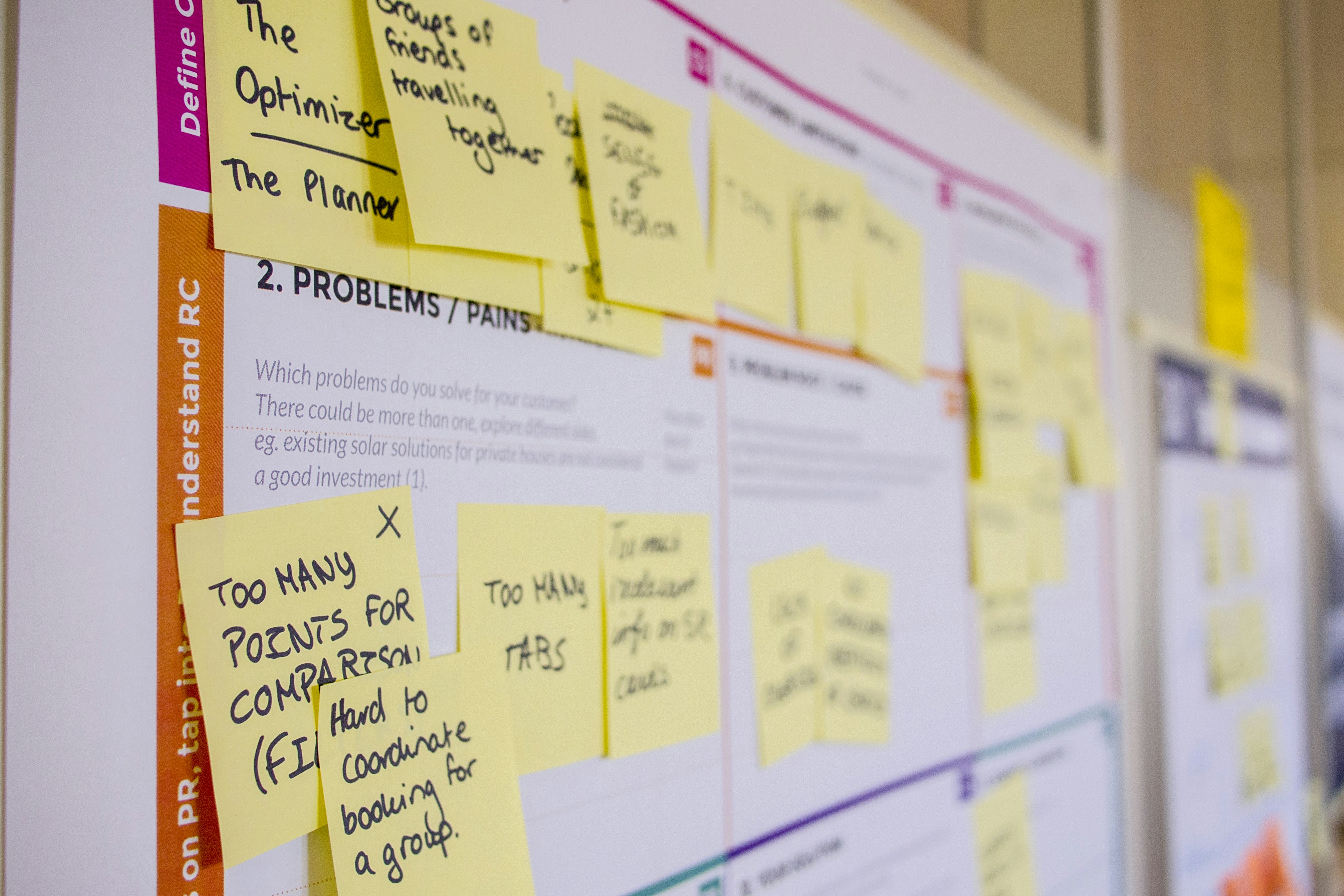Edited:
May 29, 2025
Read time:
10 mins at 200 wpm
TL;DR
Create user journey maps to visualize the steps users take to achieve their goals. Focus on aligning team perspectives, identifying pain points, and uncovering opportunities for improvement. Start with clear personas and relevant scenarios, and regularly revisit your map to inform decisions and enhance user experiences.
Sparked your interest? Read on.
Introduction
A user journey map (or customer journey map) is a visualization of the steps someone takes to reach a goal while interacting with your product, service, or brand. It’s one of the most powerful tools in UX - because it helps you walk in your user’s shoes and uncover opportunities to improve every step of their experience.
In this guide, you’ll learn what journey maps are, why they matter, and how to create one that works.
What Is a journey map?
At its core, a journey map outlines:
The steps a user takes to complete a goal;
The thoughts and emotions they experience along the way.
It’s a blend of storytelling and visualization—giving teams a shared, holistic view of the user’s experience. That shared understanding creates alignment, exposes pain points, and helps teams design smarter, more empathetic solutions.
The basic process looks like this:
Define the scenario and user;
Map actions, thoughts, and emotions;
Organize into phases;
Visualize the journey.
Why use journey maps?
1. Align the team
Most organizations have siloed success metrics - marketing, support, product, and sales all measure different things. Journey mapping creates a shared mental model by focusing everyone on one question: What is the user’s experience really like?
That shared perspective helps:
Break down silos;
Identify gaps and inconsistencies;
Prioritize meaningful improvements.
2. Make better decisions
The journey map becomes a living artifact - something you can return to when making product, design, or process decisions. It tells a clear story about your users and keeps everyone focused on what matters: their experience.
Key components of a journey map
1. Actor
The actor is the persona the map is based on. Their actions and experiences should be grounded in research - not guesswork.
Pro tip: One map = one point of view. If you’re mapping the experience of students and faculty at a university, you’ll need two separate maps - each has a different goal and path.
2. Scenario + expectations
This defines the situation your map addresses. It includes:
The goal your actor is trying to achieve;
Their expectations for how it should go.
Example:
Scenario - Switching mobile plans to save money.
Expectation - Easily compare prices and coverage without needing to call support.
3. Journey phases
These are the high-level stages your user moves through. They organize the map and vary depending on the scenario.
Examples:
E-commerce: Discover → Try → Buy → Use → Support;
Automotive: Awareness → Research → Test Drive → Purchase → Ownership;
B2B SaaS: Purchase → Onboarding → Adoption → Expansion → Advocacy.
4. Actions, mindsets & emotions
This is where the magic happens—understanding what the user is doing, thinking, and feeling at every stage.
Actions: What they’re doing (searching, clicking, asking).
Mindsets: What they’re thinking and wondering.
Emotions: How they’re feeling (anxious, excited, frustrated).
Plot emotions across the journey with a line graph. It’s a powerful way to visualize pain points and moments of delight.
5. Opportunities
Journey mapping isn’t just for documentation—it’s for insight. Opportunities are the takeaways from your map:
What’s working well?
What’s broken?
Who owns each fix?
How will we measure improvement?
This is where you turn insights into action.
Tips for creating great journey maps
1. Align to a persona
Start with a realistic customer persona. It should reflect a specific user type - complete with goals, pain points, and motivations. Two or three well-defined personas are usually enough.
2. Choose What to Measure
You don’t need to map everything. Start with a clear goal:
Improve customer success flows?
Explore pain points during sales?
Understand onboarding better?
Choose what’s most relevant to your current goals—and keep it focused.
3. Organize by touchpoints and stages
Touchpoints = every interaction a customer has with your brand (ads, emails, product usage, etc.)
Stages = every step they take to reach their goal.
Together, these create structure for your map and help uncover where the experience is strong—and where it falls apart.
Final thoughts
Journey mapping is more than a research tool—it’s a strategy tool. Done right, it:
Helps you see your product through your users’ eyes;
Reveals friction, confusion, and delight;
Brings teams together around a shared goal: better experiences.
Whether you’re designing a new product, improving an old one, or simply trying to understand your audience better - journey mapping is one of the smartest tools in your UX toolkit.
